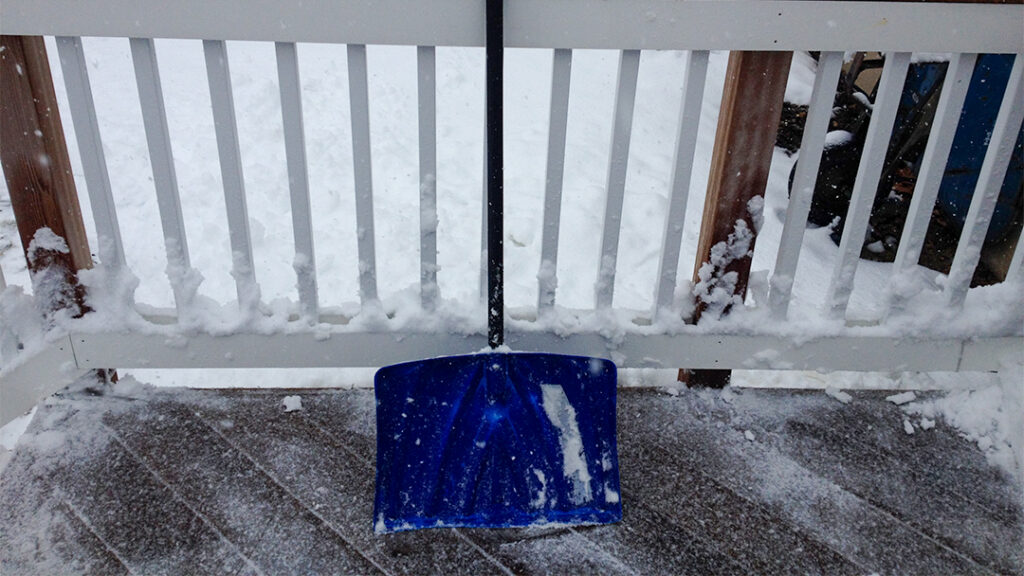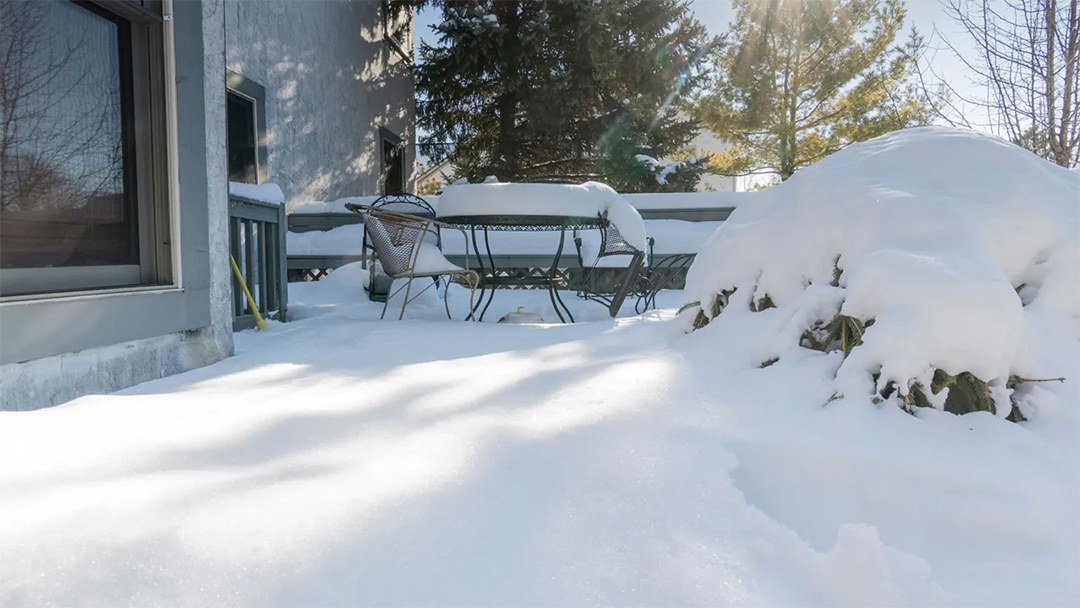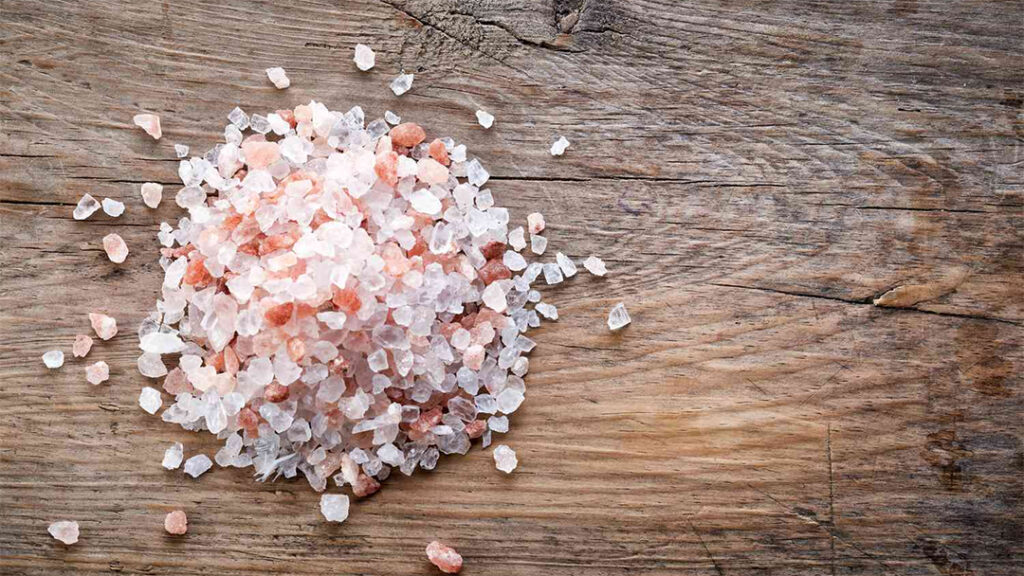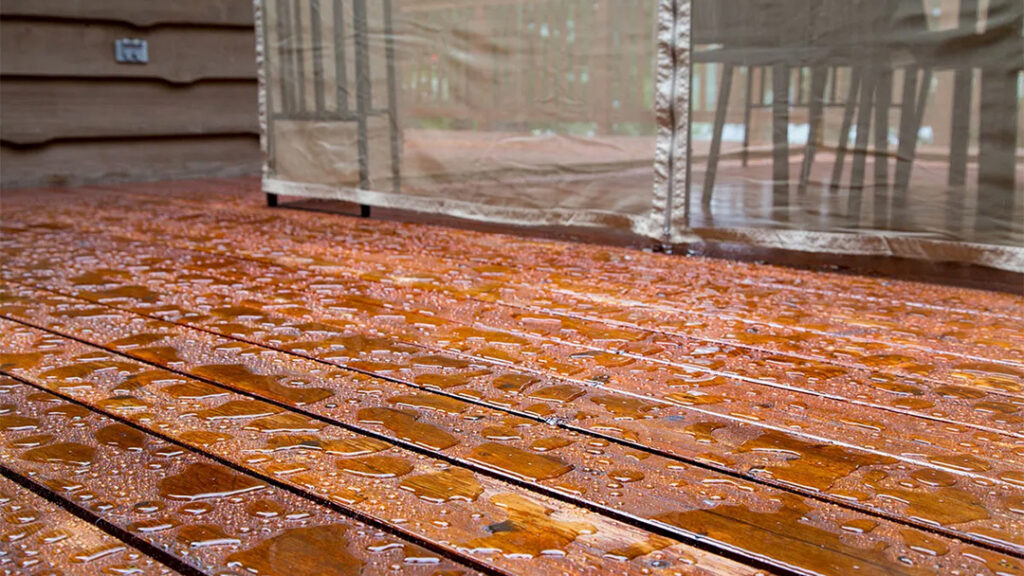Winter can be beautiful, but snow and ice can pose challenges for homeowners with outdoor decks. To keep your deck safe, functional, and looking great during snowy weather, it’s important to take the right steps to protect it—whether it’s made of wood or composite materials. Here’s your guide to proper deck care when the snow starts to fall.

1. Remove Snow Carefully
Snow removal is essential to prevent excessive weight on your deck and keep it safe to use. Here’s how to do it right for both wood and composite decks:
- Use the right shovel:
- Opt for a plastic or rubber-edged snow shovel to avoid scratching or gouging the surface.
- Avoid metal shovels, which can damage the finish on wood or composite boards.
- Shovel with the grain:
- Always shovel in the direction of the boards, not across them, to minimize the risk of damage.
- Clear regularly:
- Don’t let snow pile up, especially on elevated decks. Excessive weight can strain the structure, leading to potential safety issues.
2. Skip the Salt
While de-icing sounds helpful, rock salt and some ice-melting products can harm your deck:
- Wood decks: Salt can dry out the wood, leading to cracking and splintering over time. It can also corrode fasteners.
- Composite decks: Many de-icing products can leave stains or degrade the composite material.
Alternative solutions:
- Use sand or kitty litter for added traction without harming the deck surface.
- Look for a pet-safe or deck-friendly ice melt that’s labeled as safe for your decking material.
3. Prevent Ice Buildup
Ice can make your deck slippery and dangerous, so prevention is key:
- Keep it clean: Regularly remove snow to prevent it from melting and refreezing into ice.
- Apply traction mats: Place non-slip mats or runners on high-traffic areas to ensure safe passage.
4. Watch for Water Damage
Snow and ice mean moisture, which can be a bigger problem for wood decks than composite ones:
- Wood decks: Prolonged exposure to moisture can lead to rot, warping, or cracking. Brush off snow and ice as quickly as possible and ensure proper drainage by clearing debris from between boards.
- Composite decks: While composite materials are more moisture-resistant, standing water or ice can still lead to slick, unsafe conditions. Keep your deck clear for safety.
5. Protect Your Deck’s Finish
Snow and ice can wear down your deck’s protective finish over time. Here’s how to protect it:
- Wood decks:
- Apply a water-repellent sealer in the fall to help the deck shed moisture.
- Inspect the finish in spring to see if touch-ups are needed.
- Composite decks:
- Avoid using abrasive tools or harsh chemicals that can dull the surface.
- Rinse the deck with warm water and mild soap to remove any winter residue once the snow clears.
6. Mind the Furniture
Heavy snow can weigh down outdoor furniture and damage your deck surface:
- Cover and store: Cover furniture with weatherproof covers or move it to a sheltered spot for the season.
- Lift and clean: Avoid dragging furniture across the deck to prevent scratching or scuffing.
Why It Matters
Caring for your deck during snowy weather doesn’t just prevent damage—it also ensures your deck stays safe and ready to enjoy once the weather warms up. With regular care and the right techniques, you can extend the life of your deck and protect your investment, no matter the material.
Need help preparing your deck for winter or considering a new deck installation? Contact Appalachian Deck Company for expert advice and services. We specialize in both wood and composite decking solutions to keep your outdoor space looking and functioning at its best!
Stay safe, and keep your deck in top shape this winter!




